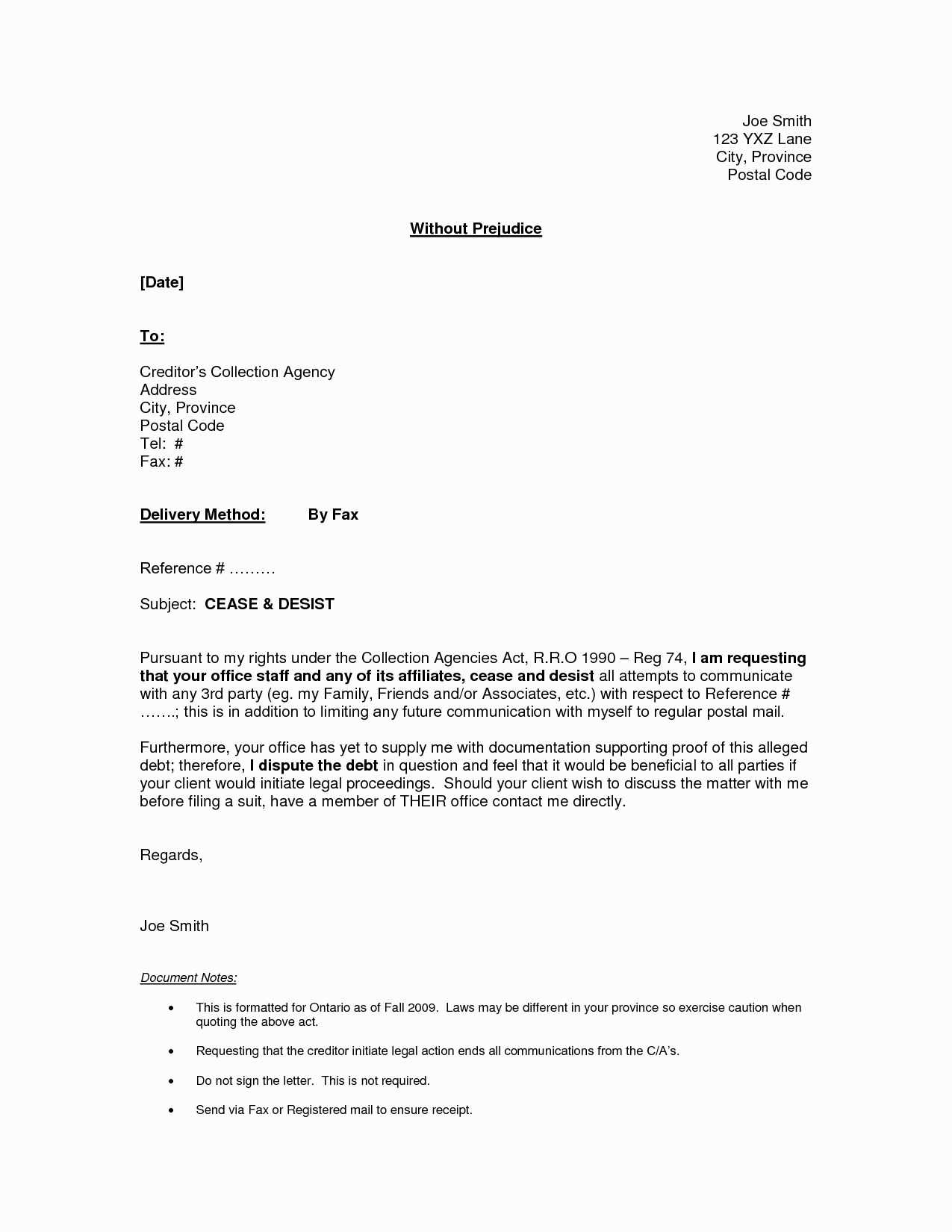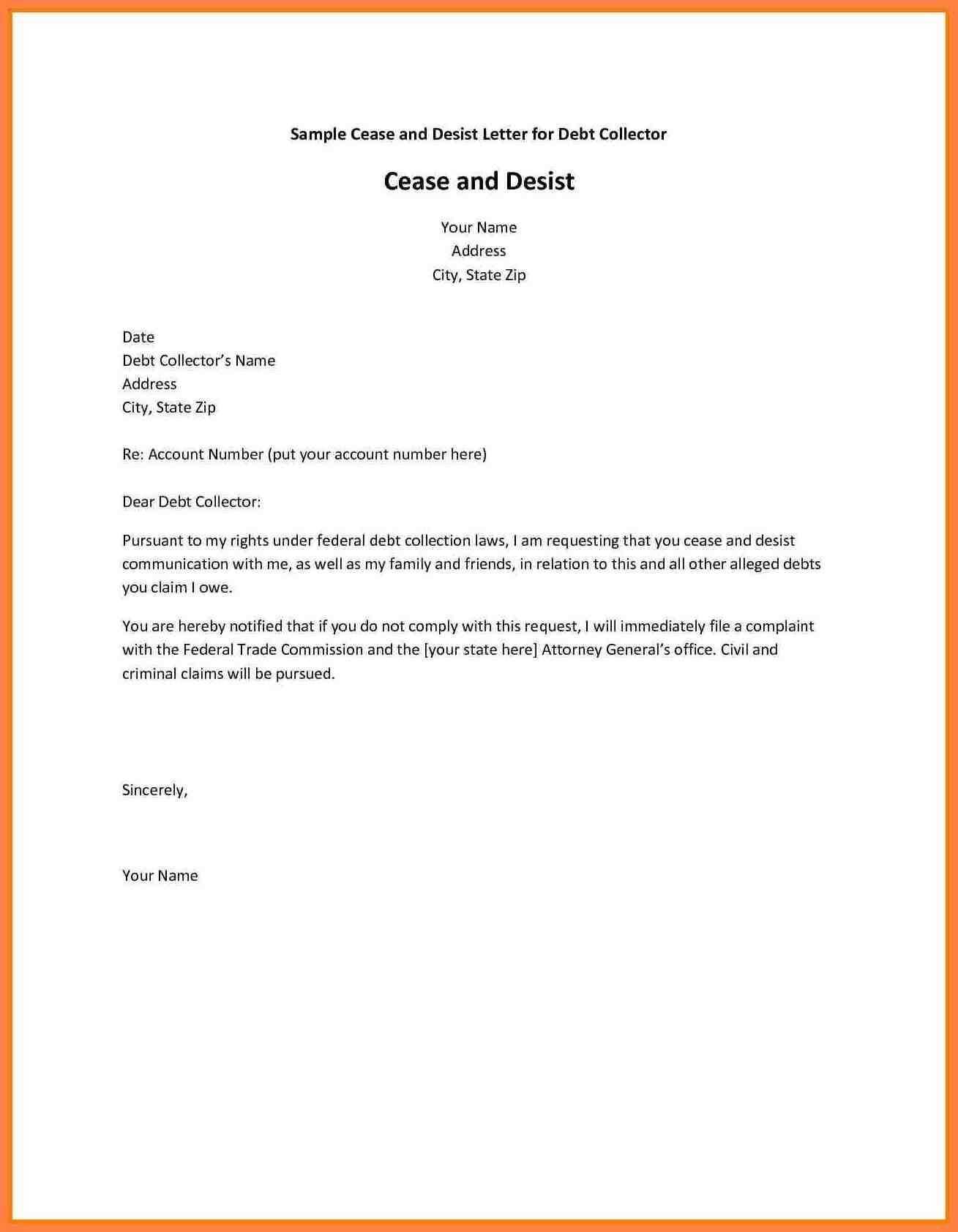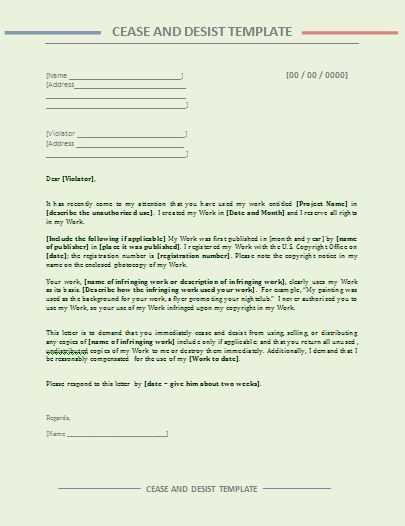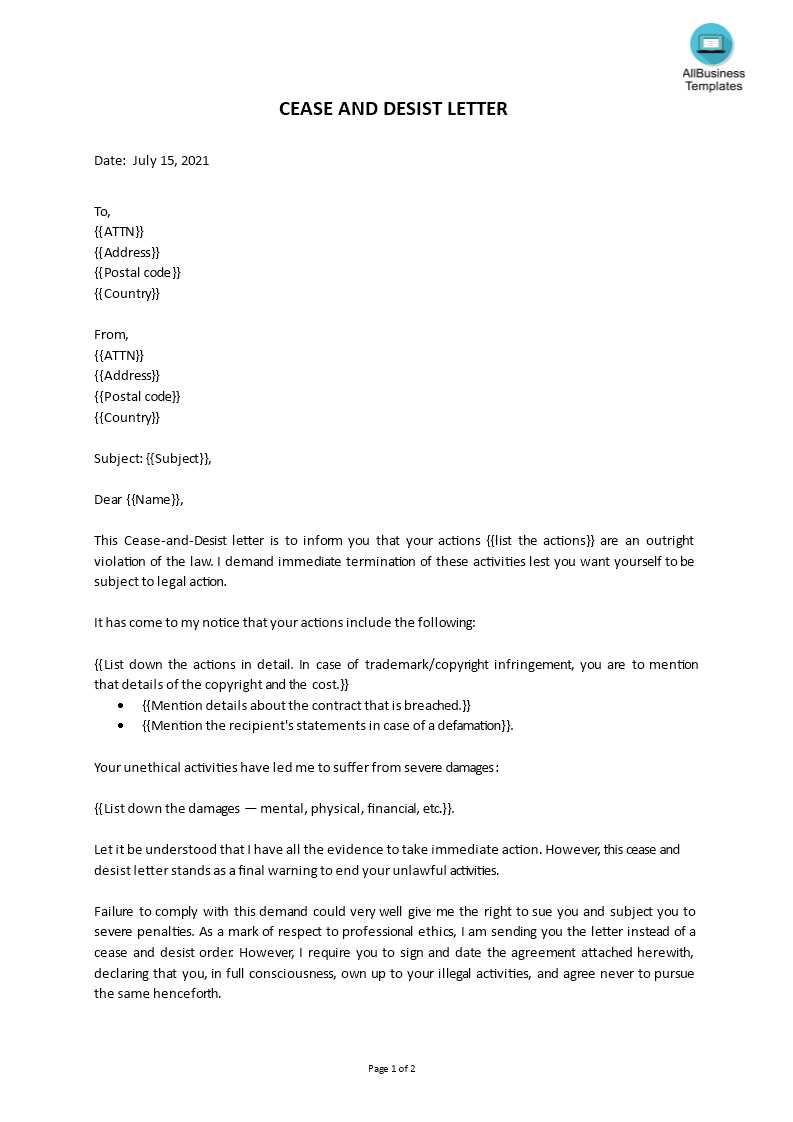Attorney Cease and Desist Letter Template

In certain situations, it is crucial to formally notify individuals or organizations about actions that need to stop immediately to avoid further legal consequences. A well-drafted formal document can help communicate this message effectively and ensure the protection of one’s rights.
Purpose of a Formal Warning
This document serves as a powerful tool for addressing unlawful behavior or infringement of rights. It alerts the recipient to the illegal or inappropriate activity and demands that they halt their actions. Often, this is the first step before more serious legal proceedings take place.
When to Use Such a Document

- Intellectual property violations, such as copyright infringement
- Harassment or defamation issues
- Contract breaches or unauthorized business practices
- Violation of personal privacy or misuse of information
Key Elements of a Formal Warning

A strong document must contain specific components to be effective:
- Introduction – Clearly state the reason for the notice and provide context.
- Details of the Violation – Include evidence or examples of the issue at hand.
- Demands for Action – Specify what actions must be stopped immediately.
- Consequences – Outline the potential legal actions if the situation is not resolved.
- Timeframe – Set a clear deadline for compliance with the demands.
How to Customize the Document
Personalizing this type of warning is important to ensure that it addresses the specific issues at hand. Modify the document to fit the particular circumstances, including the relevant details about the violation and the desired outcome.
Consider Legal Advice
While this document can be a useful first step, consulting with a legal professional is recommended. They can offer guidance on the proper phrasing, ensure that your rights are fully protected, and help you navigate any complex legal requirements.
Understanding Legal Notices and Their Use
Formal legal notices are essential tools for addressing disputes, protecting intellectual property, and preventing further unlawful actions. These documents are a means to communicate a serious warning to individuals or organizations engaged in actions that violate another party’s rights. They establish clear boundaries and set the stage for potential legal proceedings.
Such documents involve the direct communication of a claim or accusation. They are often sent when one party believes another is acting unlawfully, whether it be through intellectual property infringement, harassment, or other violations. The purpose is to formally demand that the recipient halt their behavior to avoid legal repercussions.
When to Use a Formal Legal Document

These documents are useful in various situations, especially when informal requests or warnings have failed. Common scenarios include:
- Unlawful use of intellectual property
- Defamation or harassment claims
- Breach of contract or agreement
- Privacy violations or unauthorized use of personal data
Essential Elements of a Legal Notice
For such a document to be effective, it must clearly present the issue and the desired action. Essential components include:
- Clear Identification – Identifying the recipient and the specific violation
- Detailed Description – Outlining the actions that have led to the dispute
- Demands – Clearly stating what the recipient must do to resolve the situation
- Consequences – Defining the potential legal actions if the demands are not met
- Timeframe – Setting a reasonable deadline for compliance
How to Customize a Legal Document
Personalizing the document is important to ensure it addresses the specifics of the case. Modify the content to include accurate details of the violation and the required resolution. Customizing the language ensures that the document remains clear, precise, and effective in communicating the intent to the recipient.